Guides • Understanding Publishing
Last updated on May 02, 2023
How to Write a Book Blurb (+ Free Template)
A blurb is a short description of a book that is usually found on its back cover. Its purpose is to entice readers into buying the book by revealing details about its plot, setting, or subject. Blurbs are often 150-200 words long, though this may vary between genres and publishers.
In this post, we’ve outlined how to write a blurb to encourage readers to pick up your book and be a great marketing tool — complete with a free template.
How to write a book blurb in 7 steps:
- 1. Grab your reader’s attention with an irresistible hook
- 2. Introduce your main character(s)
- 3. Establish the conflict and stakes
- 4. Use a tone that matches your book
- 5. Show off your credentials, if it’s important
- 6. Entice readers with comparable titles
- 7. Edit your blurb to within an inch of its life
With this in mind, let's get specific about what you should include in your blurb to capture your audience’s interest.
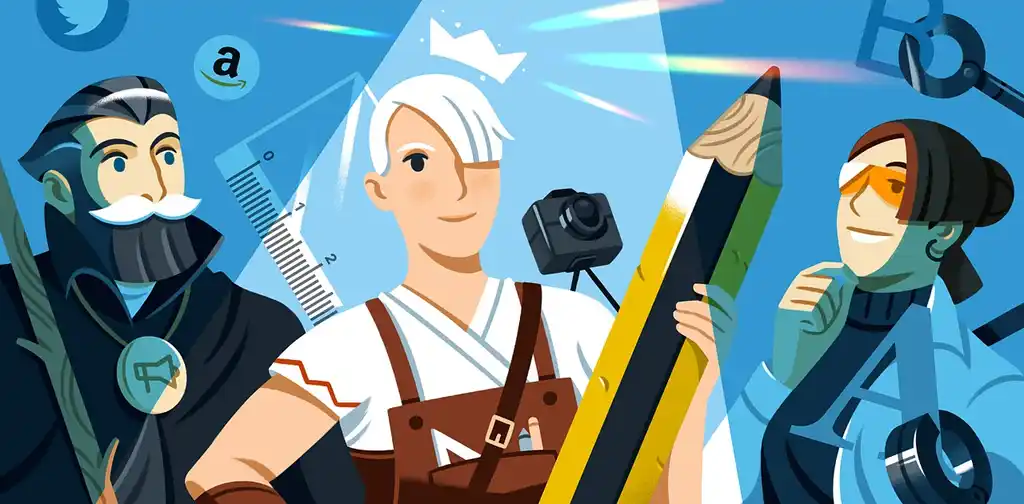
MEET THE BEST PUBLISHING PROFESSIONALS
Polish your book with expert help
Sign up to browse 2000+ experienced editors, designers, and marketers.
1. Grab your reader’s attention with an irresistible hook
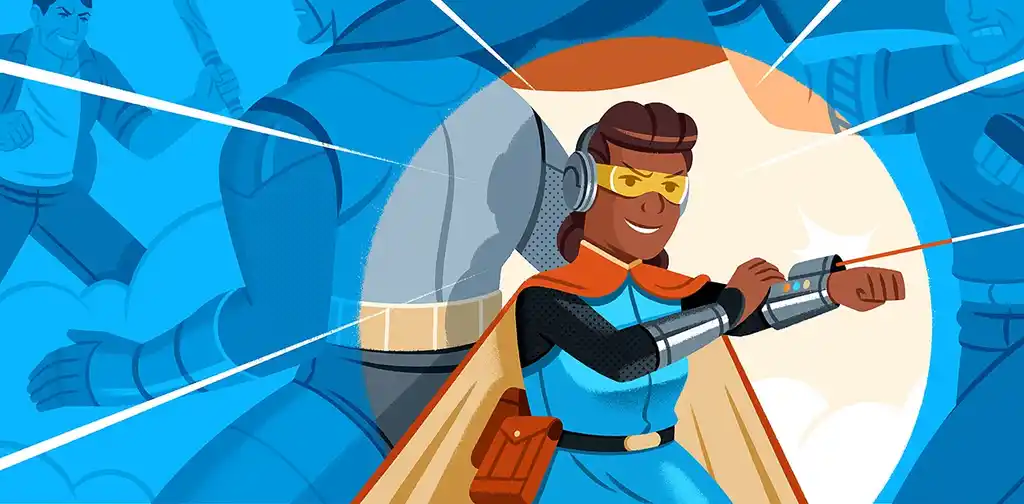 If a reader isn’t engaged by the first sentence, they might not read on. On some Amazon pages, the blurb’s first line is all readers will see before they have to click “read more.” With this in mind, you’ll want to hook your readers with the base premise of your story and leave them wanting more.
If a reader isn’t engaged by the first sentence, they might not read on. On some Amazon pages, the blurb’s first line is all readers will see before they have to click “read more.” With this in mind, you’ll want to hook your readers with the base premise of your story and leave them wanting more.
Consider this the elevator pitch for your story. Give the reader an idea of your story’s plot, characters, and maybe even themes. Keep it to two or three sentences that get across the overarching points.
Example: Uncanny Times by Laura Anne Gilman
The hook for Laura Anne Gilman’s urban fantasy novel Uncanny Times about two siblings who hunt supernatural monsters quickly introduces the audience to both the world and its characters while leaving many questions unanswered.
Huntsmen, according to the Church, were damned, their blood unclean and unholy. Yet for Rosemary and Aaron Harker, the Church was less important than being ready to stand against the uncanny, as not being prepared could lead to being dead.
Spooky and interesting, right? To find out more about this pair of damned ‘huntsmen’, you’ll just have to read the rest of the blurb (and the book).
You don’t need the entire plot here, just give a tiny taste of what readers can expect before jumping into more detail later on in your blurb.
For help refining your book blurb’s hook, you have the option to hire a professional book marketer who specializes in blurb optimization. They’ll know what works (and what doesn’t).
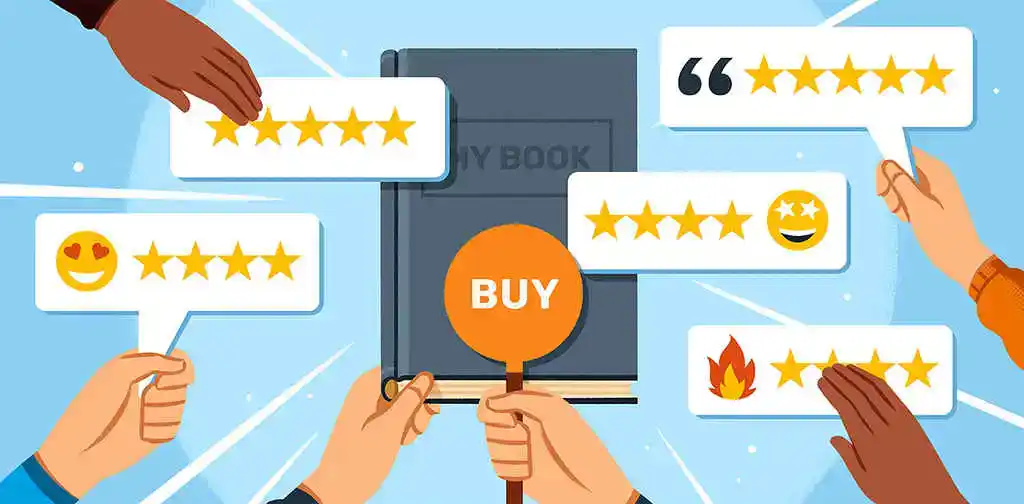
GET MARKETING HELP
Meet marketing wizards
Boost book sales with ads, social media strategy, and other marketing magic.
📚 Check out these 48 irresistible book hook examples and get inspired to craft your own.
Now that the reader is invested in your premise, let’s wheel out the heroes of your story.
2. Introduce your main character(s)
Consciously or not, readers check out the synopsis — the longer version of a blurb — to see whether they want to spend time with your main characters.
Sometimes, all you need is a name and a defining characteristic like "Daisy, an optimistic firefighter," or "Mo, a lonely tax accountant." These kinds of descriptions will allow your readers to draw a rough picture of your characters in their minds — and understand how they figure into your story's primary conflict.
Example: Educated by Tara Westover
This applies outside of fiction books too. The “main character” of a memoir is the author, and in a blurb, is introduced in much the same way. Educated by Tara Westover is about the author’s life growing up in a family of survivalists who mistrust the outside world and how she eventually leaves her family to go to college. In the Amazon description of the book, Tara, and her unique situation, are made clear in the first sentence.
Born to survivalists in the mountains of Idaho, Tara Westover was seventeen the first time she set foot in a classroom.
While we might not know everything about her, we do get a broad picture of her background and what conflicts she might face. Growing up as a survivalist and not having any formal education until she was seventeen are two defining characteristics that drive the narrative and inform who Tara is.
Remember that brevity is the name of the game here. We don’t need to know your character's full backstory or about when they were rejected by their crush in elementary school (unless it’s central to the story).
The blurb does a lot of heavy lifting to get readers interested in your book, but it is not meant to provide a full picture. Instead, it is a marketing and discoverability tool. Stuffing it with as much information as possible can lead to a dry and bloated blurb that contains too much detail to be intriguing. Optimizing your blurb for different retailers, such as Amazon, not only helps attract your target audience but ensures that your story appears in the right search results.
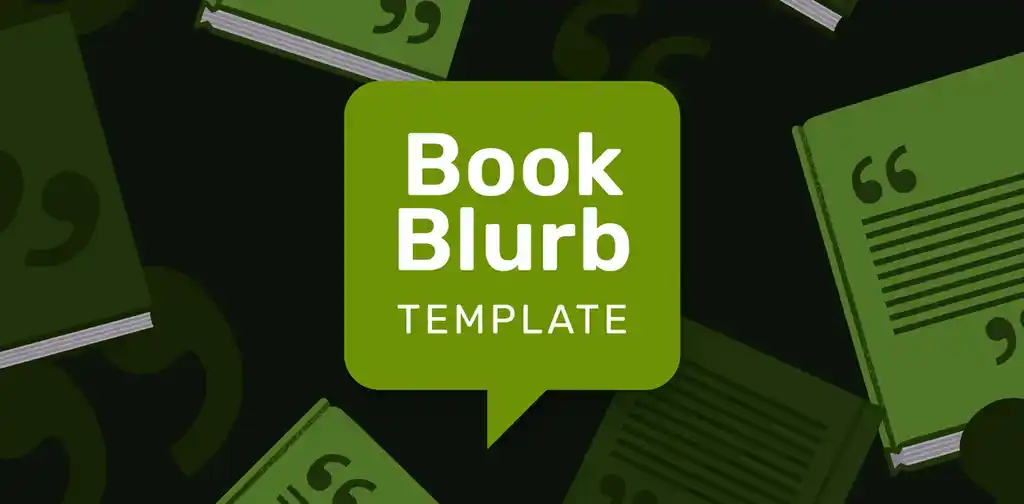
FREE RESOURCE
Book Blurb Template
Learn to write a book blurb that hooks readers from the first sentence.
Of course, great characters will only take you so far. To really get invested, readers will want to know what’s going to happen — and why it should matter to them.
3. Establish the conflict and stakes
The primary conflict is what drives your story. It’s Harry Potter doing battle against Voldemort and his minions, FBI Agent Clarice Starling negotiating with Hannibal Lecter, or Captain Ahab’s obsessive vendetta against a whale. Without a real-world conflict, you don’t have a story readers can sink their teeth into.
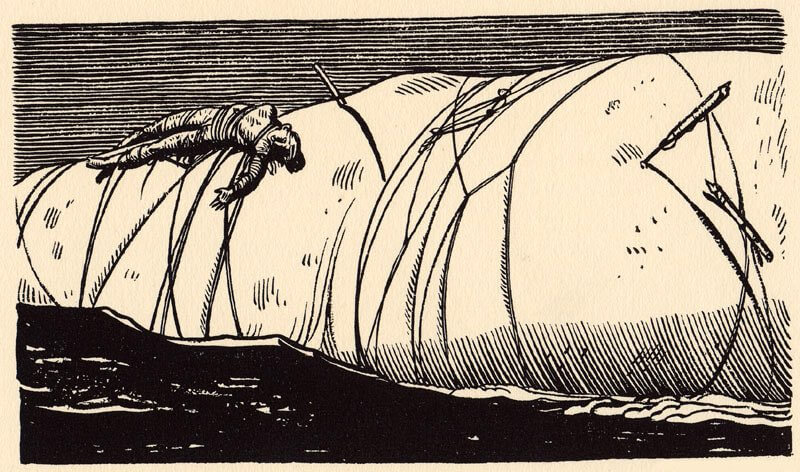
It‘s tempting to talk about “interior journeys” in your blurb, but that’s something best avoided in most cases. While a character’s compelling internal conflicts might turn out to be an aspect that readers enjoy once they read your novel, they make for terrible blurb-fodder. The exception to this is literary fiction, where the main draw and conflict in the novel is the interior journey and tends to be what readers find most compelling.
Whatever your conflict is, it should also have stakes. A blurb that says “Jack Ryan has 24 hours to rescue the Russian ambassador,” isn’t as impactful unless we know what’s at stake: “...his failure will result in certain nuclear war.”
Examples: Me Before You vs Wool
Let’s look at how two very different genres handle stakes in their blurbs. In Jojo Moyes’s romance, Me Before You, a young woman becomes a caregiver for a quadriplegic millionaire and begins to fall for him. The stakes of this story are introduced like this:
When she learns that Will has shocking plans of his own, she sets out to show him that life is still worth living.
This single sentence not only establishes the external conflict (“Louisa must convince Will to live”), but it also lays out the stakes, which are literally life and death.

On the other hand, Hugh Howey’s self-published sci-fi phenomenon, Wool, is set in an underground community known as a ‘silo.’ When its leader decides to break the #1 rule by leaving the silo, a mechanic named Juliette is tasked with putting the community back together:
... she will soon learn just how badly her world is broken. The silo is about to confront what its history has only hinted about and its inhabitants have never dared to whisper. Uprising.
The conflict: Juliette must mend her community while coming to terms with its inherent flaws.
The stakes: The smashing of the status quo and potential anarchy.
To show your story’s full potential, the reader must know that something hangs in the balance for your characters.
Not every book will have world-shattering stakes and consequences, and that’s alright. Some books are simpler, gentler stakes — and in those situations, it’s important that we don’t confuse our readers with an over-dramatic blurb.
4. Use a tone that matches your book
As you introduce your story and characters, keep in mind the tone of your blurb. You want your book's tone to match the reader’s genre expectations in some small way. The suspenseful voice of a thriller wouldn’t work for a fluffy romance novel and vice versa.
It might be tempting to keep it neutral, but that can lead to it reading more like a summary than a convincing argument for why someone should read your book. The correct atmosphere can mean just as much for a reader as interesting characters and plot.
To get a better idea of tone and how it can shape a blurb, let’s look at examples from the two very different genres mentioned above.
Example: The Love Hypothesis vs The Guest List
Ali Hazelwood’s best-selling romance novel, The Love Hypothesis, follows the fake dating shenanigans of a doctoral candidate as she tries to prove to her friend that she can, in fact, date people. How does the blurb introduce this dilemma?
As a third-year Ph.D. candidate, Olive Smith doesn't believe in lasting romantic relationships — but her best friend does, and that's what got her into this situation. Convincing Anh that Olive is dating and well on her way to a happily ever after was always going to take more than hand-wavy Jedi mind tricks: Scientists require proof. So, like any self-respecting biologist, Olive panics and kisses the first man she sees.
The tongue-in-cheek voice introduces this well-loved romance trope into a world of laboratories and overworked Ph.D. students and lets readers know what to expect: a fun rom-com full of various hijinks and misunderstandings.
Lucy Foley's The Guest List is on the opposite side of the spectrum. A page-turning thriller set on an island off the coast of Ireland, it follows the twists and turns of a wedding gone wrong. The blurb establishes a sense of normalcy before quickly breaking it and promising something quite different:
As the champagne is popped and the festivities begin, resentments and petty jealousies begin to mingle with the reminiscences and well wishes. The groomsmen begin the drinking game from their school days. The bridesmaid not-so-accidentally ruins her dress. The bride’s oldest (male) friend gives an uncomfortably caring toast.
And then someone turns up dead. Who didn’t wish the happy couple well? And perhaps more important, why?
There’s a creeping sense of tension throughout and already, the reader knows they’re in for a story full of secrets and backstabbing.
At this point, you may have run out of words that will go on the back of your book jacket. Hopefully, readers will be suitably enticed and ready to purchase your masterpiece. But if you still have some space to work with (for example, on your Amazon book page), you can include a few more things in your blurb.
5. Show off your credentials, if it’s important
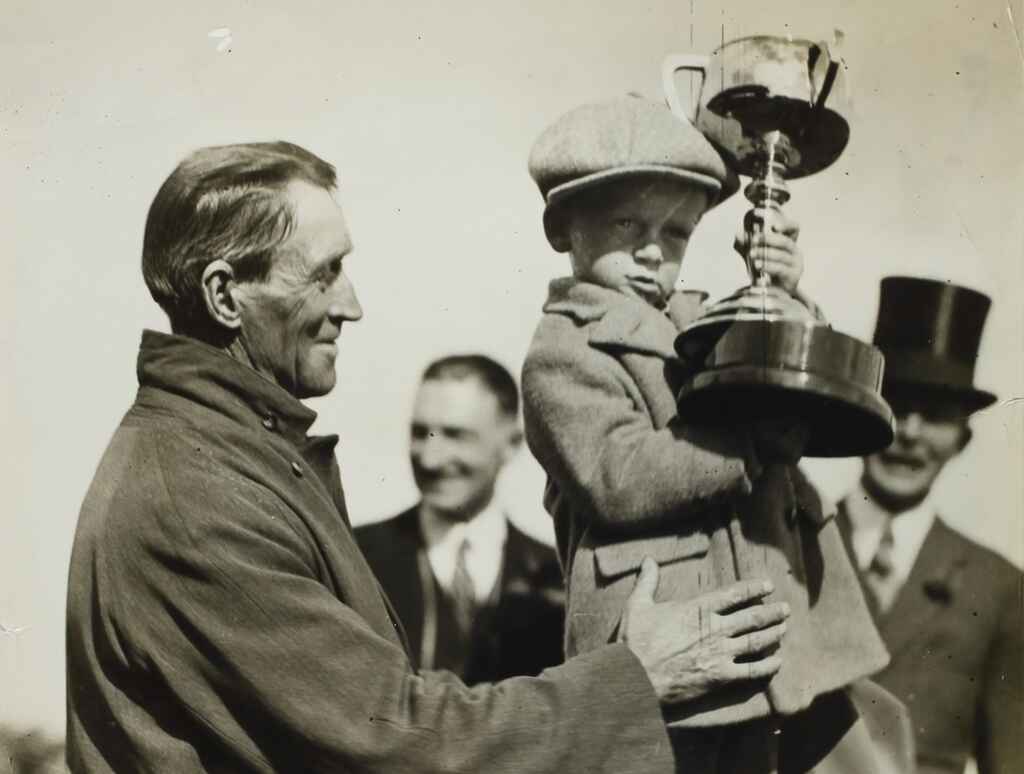 Publishers will often round off a blurb with some information about the author. This is especially true of nonfiction, where you’ll want to establish yourself as a credible authority on the subject. Why should readers trust you over anyone else? What about your knowledge and experience means that you were the right person to write this book?
Publishers will often round off a blurb with some information about the author. This is especially true of nonfiction, where you’ll want to establish yourself as a credible authority on the subject. Why should readers trust you over anyone else? What about your knowledge and experience means that you were the right person to write this book?
Example: The Emperor of All Maladies vs The City We Became
Sometimes it’s best to lead with your bona fides like Siddhartha Mukherjee does in his Pulitzer Prize-winning exploration of the history of cancer, The Emperor of All Maladies. The first line of the description reads:
Physician, researcher, and award-winning science writer, Siddhartha Mukherjee examines cancer with a cellular biologist’s precision, a historian’s perspective, and a biographer’s passion.
The reader immediately knows who Mukherjee is and how his medical background probably means he deeply understands the subject.
Want to learn more about increasing your audience and credibility as a nonfiction author? Check out this free course on building a platform as a nonfiction author!
While not always applicable for fiction authors, if you’ve won any awards or received any professional recognition, this is the perfect place to bring them up. Brag a little about your accomplishments and how you’ve been recognized by the literary community.
N.K. Jemisin’s urban fantasy novel, The City We Became, is about five people who become the physically embodied souls of New York City. This is from the Amazon blurb:
Three-time Hugo Award-winning and New York Times bestselling author N.K. Jemisin crafts her most incredible novel yet, a "glorious" story of culture, identity, magic, and myths in contemporary New York City.
See how the plot and characters are highlighted alongside Jemisin’s many professional accolades? In a way, this sentence throws a few things the reader’s way to see what sticks: if you like the security of reading books from well-regarded novelists, then you can take the recommendation of the Hugo selection committee. If you’re interested in the themes stated, then you might also like this book.
However, not all readers may consciously seek out “books about culture and identity.” To help them out a bit, you may want to give them some relatable points of comparison.
6. Entice readers with comparable titles
More likely though, if you’re writing fiction, rather than talking about yourself, you’ll want to highlight books that are similar to yours. Comp titles — comparative and competitive books on the market — are an important tool in publishing, especially when you’re querying agents, but they are also helpful in blurbs. People can be wary of putting time into something unknown and unfamiliar, but if it bears some resemblance to well-known and well-loved stories, they may be more likely to try it out.
Consider what popular books (and other media) share similarities with your story. This can be based on everything from theme to tone to the ideas you explore. A popular formula for comp titles is saying something like, “The Hunger Games meets Twilight,” so it’s best to think of multiple comp titles and see which combination sounds the most interesting.
Example: Iron Widow by Xiran Jay Zhao
The comp titles can also be used in a hook, like in the Amazon description for Xiran Jay Zhao’s sci-fi YA novel, Iron Widow:
Pacific Rim meets The Handmaid's Tale in this blend of Chinese history and mecha science fiction for YA readers.
The unlikely juxtaposition of an action-packed sci-fi blockbuster with a work of feminist literature will stand out to readers, while the rest of the blurb gives them an overview of what the story is about: a girl trying to thrive and survive in a misogynistic society while piloting a giant mecha robot. Using a unique combination of comp titles will make your novel stand out and appeal to readers who like those kinds of stories.
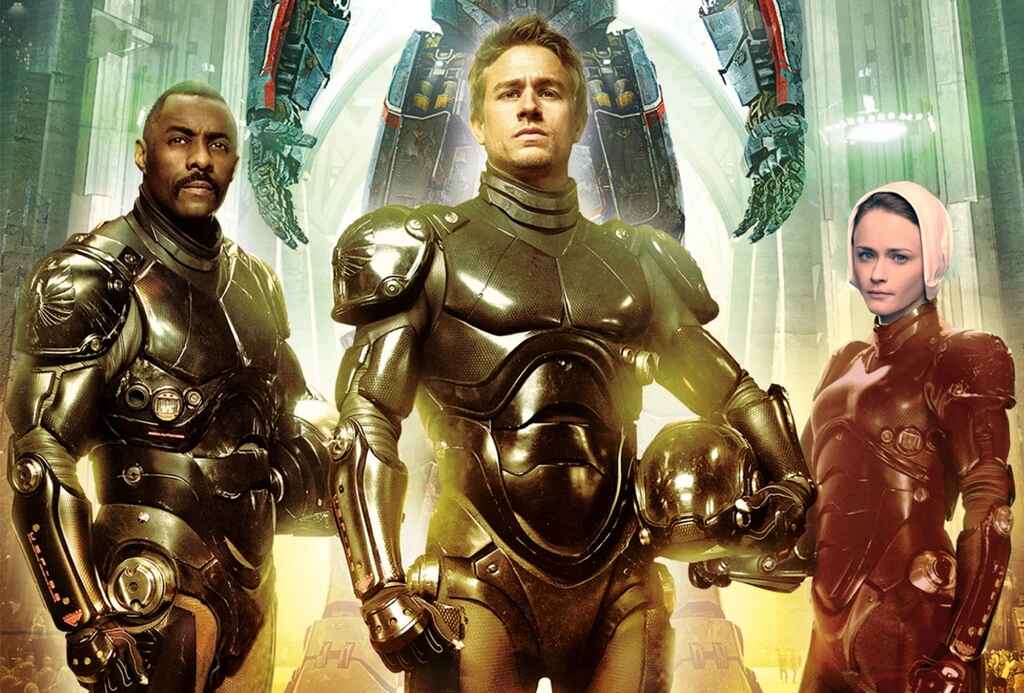
But before you start using your blurb everywhere from the back of your book to your ad campaigns, there’s one crucial step that you must not forget…
7. Edit your blurb to within an inch of its life
Although a blurb is only a few paragraphs, it takes a lot of work to get it right. Much like with a book, your first attempt won’t be perfect. After you complete a first draft, it’s time to edit it.
Go over every aspect with a fine-toothed comb. Ask yourself:
- Is my blurb succinct?
- Does the tone match the story?
- Are the story and characters introduced sufficiently without providing too much detail?
- Are the conflict and stakes clear?
- Are my comp titles and/or credentials relevant and interesting?
- Does the overall narrative flow well?
Making sure you have all the elements of a good blurb will help you gain readers and get more eyes on your book. If you’re unsure or feel you need extra help to get it right, consider hiring a book marketer to help you refine it. A blurb is one of your most important pieces of marketing material, and a book marketer understands the publishing landscape and what works best to attract readers.

GET MARKETING HELP
Meet marketing wizards
Boost book sales with ads, social media strategy, and other marketing magic.
In the next part of this guide, find out how to tweak your blurb and optimize it for use on Amazon and other digital retailers.


5 responses
Dave Temple says:
28/08/2018 – 22:56
Perfect article: insightful, helpful, and on-point. I'll likely print and keep over my writing desk. Thank you, Reedsy!
Just Jeff says:
15/12/2018 – 19:44
Finally! An article that gives some "how to" and, most importantly, examples. The web is full of articles that in a nutshell say "Blurbs are important. Learn how to write one. The End." Thanks so much, Reedsy!
Michael James Gallagher says:
28/02/2019 – 18:49
Great info. Thanks.
allynnriggs says:
02/03/2019 – 18:17
Perfect timing as I am struggling to write the blurb for my third science fiction/fantasy book. With this information and all the examples I may have to rewrite the blurbs for the first two books! Thank you so much.
Heather Stretch says:
25/04/2020 – 12:53
Very insightful. And great examples. Thanks guys. As always, excellent stuff.